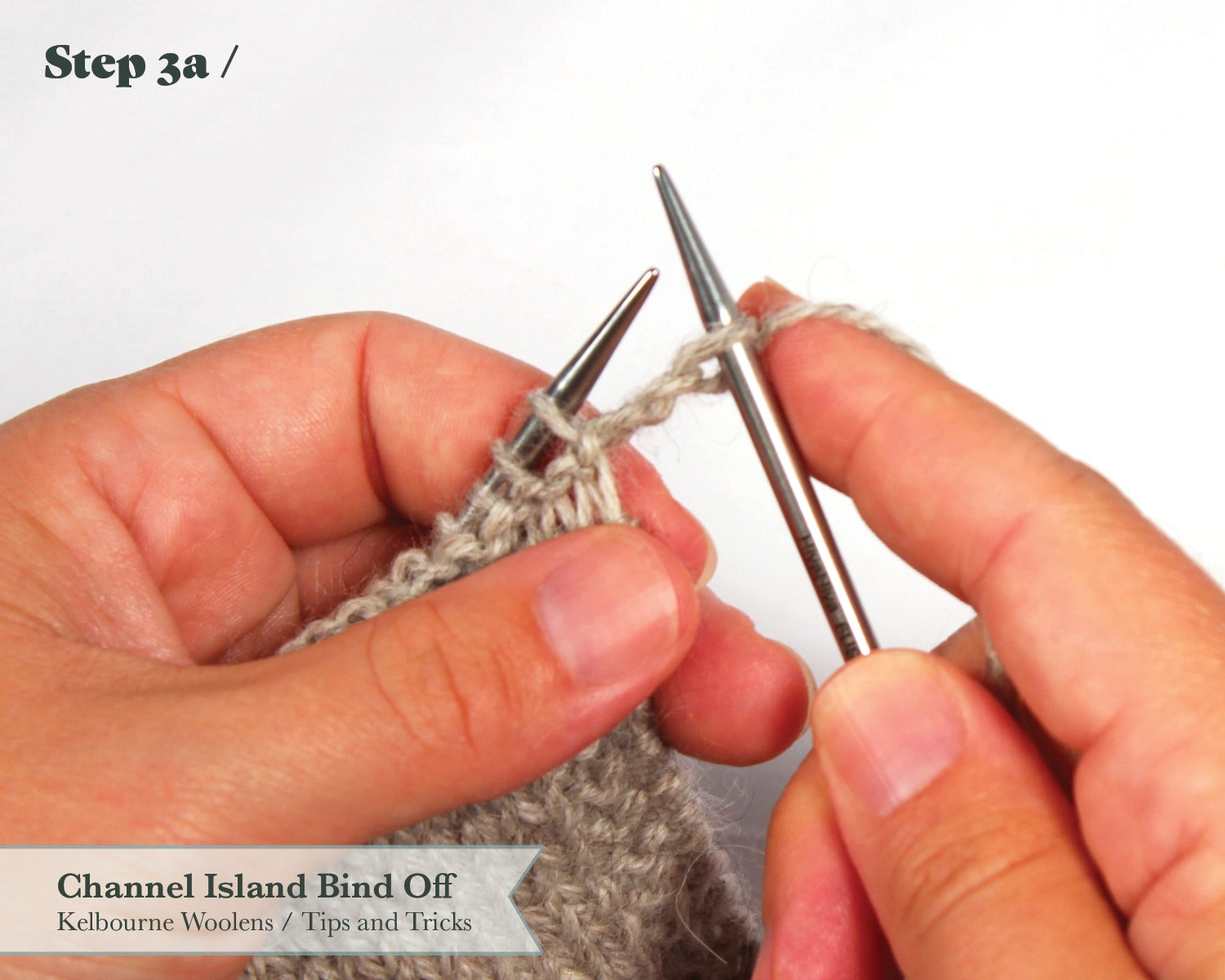The Fisherman Gansey is a classic garment with a rich and varied history. Two excellent books on the subject,
The Complete Book of Traditional Guernsey and Jersey Knitting by Rae Compton, and
Knitting Ganseys by Beth Brown-Reinsel, are ones we have in our office library and turn to often.
In a traditional Gansey, you work the body from the bottom up in the round, divide and work back and forth for the yoke on the front and back, join the shoulder seams, and then pick up stitches around the armhole and knit the sleeves from the top down. This means the bind-off and the cast-on edges won't match. I did a little research to see if I could find a bind-off that would look similar to the Channel Island cast-on, and I couldn't find a thing.
I started fiddling around with a few different picot bind-offs. These were all a bit too "picot-y" for my purposes. In the end, I merged two different bind-offs; the Icelandic bind-off and a picot bind-off. The Icelandic bind-off is worked by inserting the left hand needle through the first stitch on the right hand needle and pulling the second stitch through the first. You then knit this stitch and pull both stitches off the left hand needle, place the single stitch back on the right hand needle, and repeat. This creates a very firm bind off, which I liked. By working the second stitch a few extra times, I got the added benefit of a picot look which was also worked very firmly so it didn't dangle too much, and the end result is what you see below.
STEP 1 / 1a: The right hand needle has been inserted into the first stitch on the left hand needle as if to purl.
1b: While the right hand needle is through the first stitch, the second stitch will be pulled through the first stitch. The stitches have switch places on the needle.
STEP 2 / Knit this stitch as you normally would.
STEP 3a: / Return the just knit stitch on your right hand needle back onto the left hand needle. knit this stitch again, creating the appearance of a chain.
STEP 3b: / Once you have knit the first stitch a second time, leave it on your right hand needle. Then, knit the next two stitches on the left hand needle together. You have just decreased 3 stitches down to two.
STEP 4 / This step is worked in the exact same manner as a typical bind off.
STEP 5 / Returning the stitch to the left hand needle is critical: if the stitch is not returned, you will amass a large quantity of stitches that are still "live" on the right hand needle. Repeat Steps 1-5 for the desired number of stitches, or until all your stitches have been bound off.








